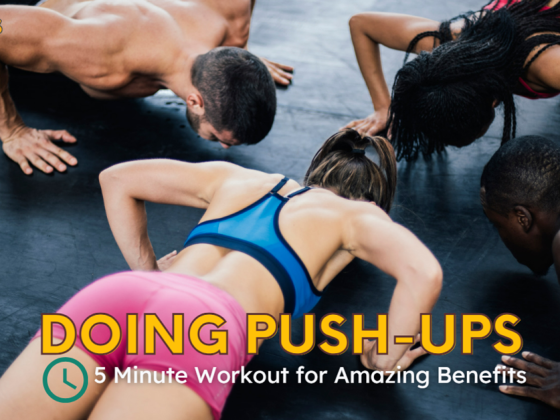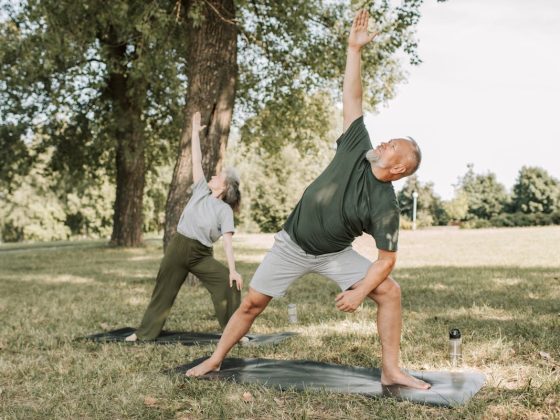With so much advice levied at those who want to lose weight, it can be hard to find good information on diet and exercise for underweight people. There are health problems associated with being underweight as well as overweight, and it is important to establish a good program to help you reach and maintain your ideal frame.
Starting an Exercise Routine
What workout program you begin depends on how underweight you are, the reasons for your low weight, and your overall fitness abilities. If you are severely underweight due to illness, you should consult with a doctor regarding the best exercises to help you regain strength. In this case, your doctor will take all factors into consideration and recommend types of exercise that are acceptable. Your doctor may refer you to a physical therapist or a personal trainer depending on your condition.
Exercise for Every Body
While many people in the modern world exercise to lose weight, the benefits of working out extend far beyond weight loss. In order to have a healthy body and mind, exercise is a key component to daily and weekly life, regardless of what your weight is. Although exercise is important for everyone, it’s important to understand your own exercise goals before beginning. For example, if you’d like to gain weight, you’ll want to do moderate cardiovascular exercise instead of intense. In addition, bulking up on your muscles can help you gain weight that is healthy.
Strength Training
One of the most important exercises you can do to start gaining weight is lifting heavy weights. You want the weight you gain to be muscle, rather than just fat. Increasing your caloric intake alone can help you increase body fat, but what you want is an even distribution of healthy fat and mostly muscle, and weightlifting and other strength training exercises can help you achieve this.
Building Mass
Lifting weights is one type of strength training that can help you build muscle mass. You can start a weightlifting program for beginners if you’ve never done it before. If you plan to use dumbbells at home, visit a personal trainer first to learn proper form.
Gym Equipment
At the gym, there is also strength training equipment, such as lat machines, leg press machine, and various other strength training equipment. Ask a trainer at the gym to work with you on learning proper form on these types of apparatus. Don’t skip out on free weights, which will likely prove more difficult and force additional stabilization from your body’s muscles. Aim for heavy lifting with lower reps, as this will prompt muscle hypertrophy and help you gain muscle weight.
Body Weight Exercise
Exercises like Pilates and yoga require very little equipment and can be done at home with workout DVDs. You can also join classes at a local gym or yoga studio for the added benefit of a knowledgeable instructor who can give personal feedback. While yoga and Pilates may not directly help increase body weight, it will increase your body’s strength and stability and will serve as an important stress reliever as you challenge your body.
Medical Clearance
Whichever types of strength training exercises you do, pair them with some cardiovascular exercises if you have your physician’s approval. Strength training is important, but cardio helps keep your heart beating efficiently and can extend your life.
Cardiovascular Exercise
Most people do aerobic exercise in order to lose weight. However, for those not interested in losing weight, it is still important to exercise the cardiovascular system by doing moderate intensity aerobic exercise. While more demanding types of cardiovascular exercise may be more fun to you, remember that the more intense the workout, the more calories you burn and the more your metabolism rate increases, which is why intense cardiovascular exercise is so effective for weight loss. For those trying to gain weight, or at least not lose additional weight, try some of the following moderate types of cardiovascular exercise:
- Walking or biking at a moderate-to-brisk pace
- Recreational swimming
- Playing golf
- Playing team sports that don’t require a lot of running (such as volleyball or baseball on a large team)
Diet Considerations
If you want to gain weight, you’ll need to eat a high-calorie diet without turning to unhealthy fats and sugars. Instead, aim for a variety of nutrient-rich foods, adding “good” fats into the mix more often than you may have previously done. Examples of good fats are avocados, nuts, and plant-based oils. Don’t go overboard with the fats; a healthy diet includes everything in moderation. Speak to a nutrition professional about your macronutrient needs to ensure you intake the proper amount of carbs, proteins, and fats to help you gain weight in a healthy way.
Caloric Needs
Though the general advice is men should eat around 2500 calories a day and women around 2000 calories a day in order to maintain their weight, it is likely you need a substantially higher number of calories in order to gain weight. Your body composition and activity level help dictate your ideal caloric intake daily, as do your goals. A nutritional professional can help you figure out your daily caloric needs to gain weight.
Healthy Weight Gain
Many people are surprised to learn it is much harder to build up one’s weight healthfully than to lose weight. The key is “healthfully.” While it is relatively easy to put on fat quickly, this often involves eating high-fat foods or using protein powders, which can contribute to a number of health problems. As with losing weight, gaining weight or getting a more athletic silhouette for your slim frame is something you should do slowly.
Exercise and Nutrition
Develop a reasonable exercise routine that includes both strength training and cardiovascular activities, and pair these workouts with a healthy, varied diet. Calculate your ideal weight and then use diet and exercise in order to reach that weight and develop a healthy physique. While it may be tempting to underweight people to forego exercise altogether, your body needs the cardiovascular exercise for overall physical and mental health and the strength training to prevent injuries. All healthy lifestyles include exercise; if you need help getting started, consult your doctor, a personal trainer, and a nutritionist for expert advice.





